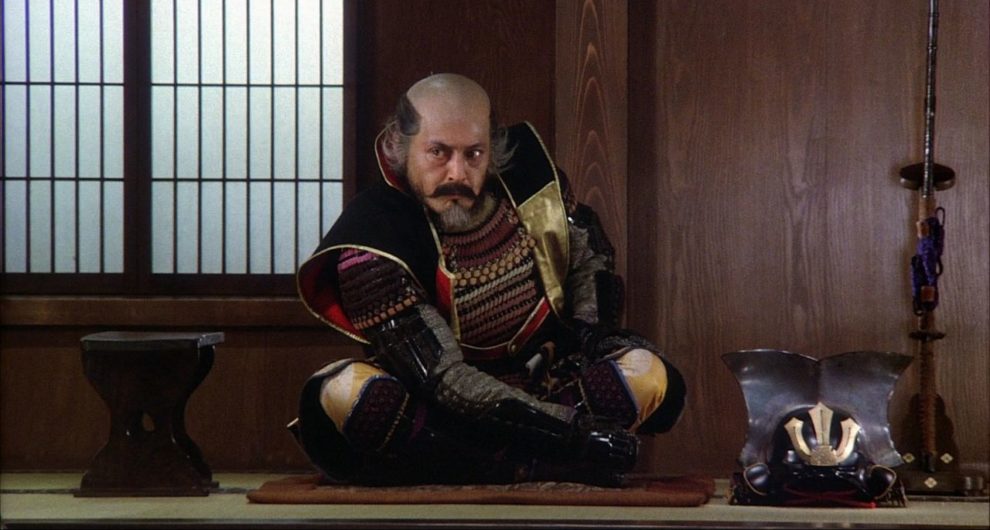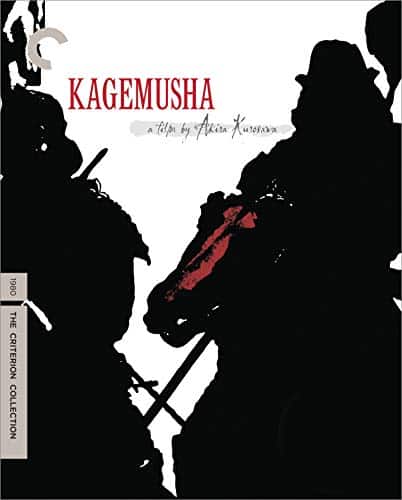When “Star Wars” came out in 1977 and manifested the beginning of the blockbuster and cemented the end of the New Hollywood movement, many cinephiles already noticed the obvious inspiration for filmmaker George Lucas, which was Akira Kurosawa's 1958 “The Hidden Fortress”. The Japanese director had been a tremendous source for inspiration and discussion when Lucas and many of his colleagues were still film students, and in some ways, laid the groundwork for many of their movies, which would go on to make millions at the box office. However, upon hearing Kurosawa had trouble securing the financing for his next project, Lucas and many others stepped in as executive producers, making it possible for Kurosawa to get the money for one of his biggest projects, “Kagemusha”, which would be the beginning of the last great phase in the career of the legendary filmmaker.
Buy This Title
on Amazon
The story takes place in 1572, when a terrible war between several clans for the reigns in Japan has taken its toll on the land and the people, causing great suffering and pain. Whereas the members of the Tokugawa clan hope to gain a tactical advantage through their relations with European missionaries, securing their supply with weapons and men, their greatest opponent, the Takeda clan, remains unbeatable. Shingen Takeda (Tatsuya Nakadai) is the leader of the clan, respected and feared among his men, but also quite careful, which is why he agrees to his brother's suggestion of hiring a shadow (“kagemusha”). The man they choose (also played by Tatsuya Nakadai ) is hoarse and a thief, but carries a great resemblance to the ruler, so he is educated in being a man of the state and behave properly in court.
However, he is unable to prevent an assassination on the real Shingen who dies, resulting in the doppelgänger having to take over the reins of the clan. Even though he is under the impression he is supposed to play the role only for three years, after which the death of the ruler will be declared and a new one selected, he remains as ruler since no one suspects anything, and he does his task rather well. With time, he becomes ignorant of his advisers and overconfident – a fatal development because the enemies of the clans already suspect something is wrong with the ruler. Besides, Shingen's son Katsuyori (Kenichi Hagiwara) want his chance to command the clan and its army, and is fed up with waiting for his father to take him seriously.
When Kurosawa introduced his project to the studio, he was already well-prepared, having done many sketches for the battle scenes, the armor of the soldiers and the backgrounds. Perhaps it was the sheer level of detail, among other aspects, which convinced the executives to grand him the money, but in any case, the influence of this preparation is present in every frame of the finished feature. Especially the battles, and the interior of the palace is quite vivid and really beautiful, whereas the color scheme, similar to other works of the director, represents the enormity of emotion or drama. Kurosawa seems to highlight feelings of jealousy and hubris, which ultimately lead to fatal decisions and actions.
As many pointed out, it is interesting how Kurosawa became famous for his samurai epics and battle scenes, even though he rarely shows these, with a few exceptions. Most of the time, a few frames show the result of the fight, the death and the destruction caused, which is also true for “Kagemusha” and “Ran”, the project he directed a few years after this one. In fact, even “Kagemusha”, despite its dimensions, is quite a minimalist movie, and more in line with Japanese theater tradition. Already the opening scene, showing how the “kagemusha” is hired by the head of the Takeda clan and his brother, establishes with very little action the idea of people being instrumentalized. Nakadai plays both roles, the ruler and his shadow, quite brilliantly, highlighting how one person in this hierarchy is simply replaceable, with the lines between the two people becoming increasingly blurry, much like the fine line between reality and dream later on in the story.
Aside from its visuals and its leading man, one should also mention the great costume design by Seeichiro Hagakusawa and Kenichi Hagiwara as the real Shingen's son who gives a strong performance as an ambitious young man tired of standing in the shadow of his father, which, if you think about it, is quite ironic.
In conclusion, “Kagemusha” is a late work for Akira Kurosawa, but nevertheless a great achievement. The director tells a story about superstition, hubris and ambition, and how these aspects can lead to tragic, often fatal consequences.

















